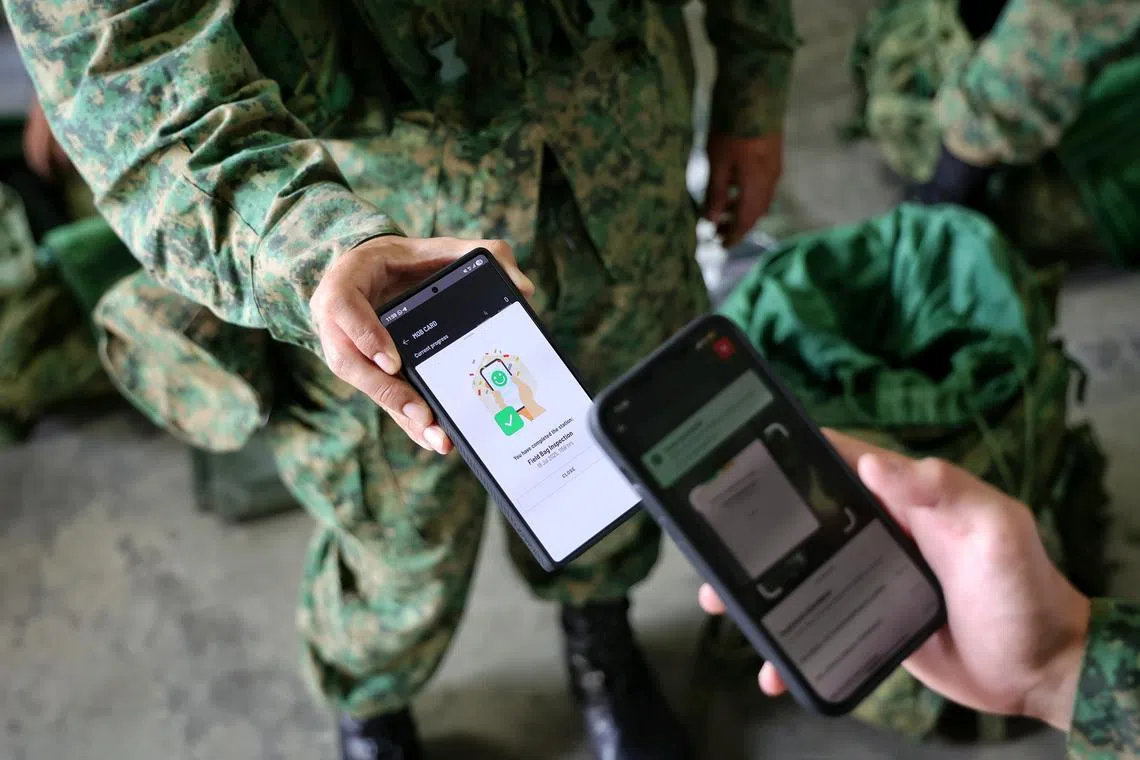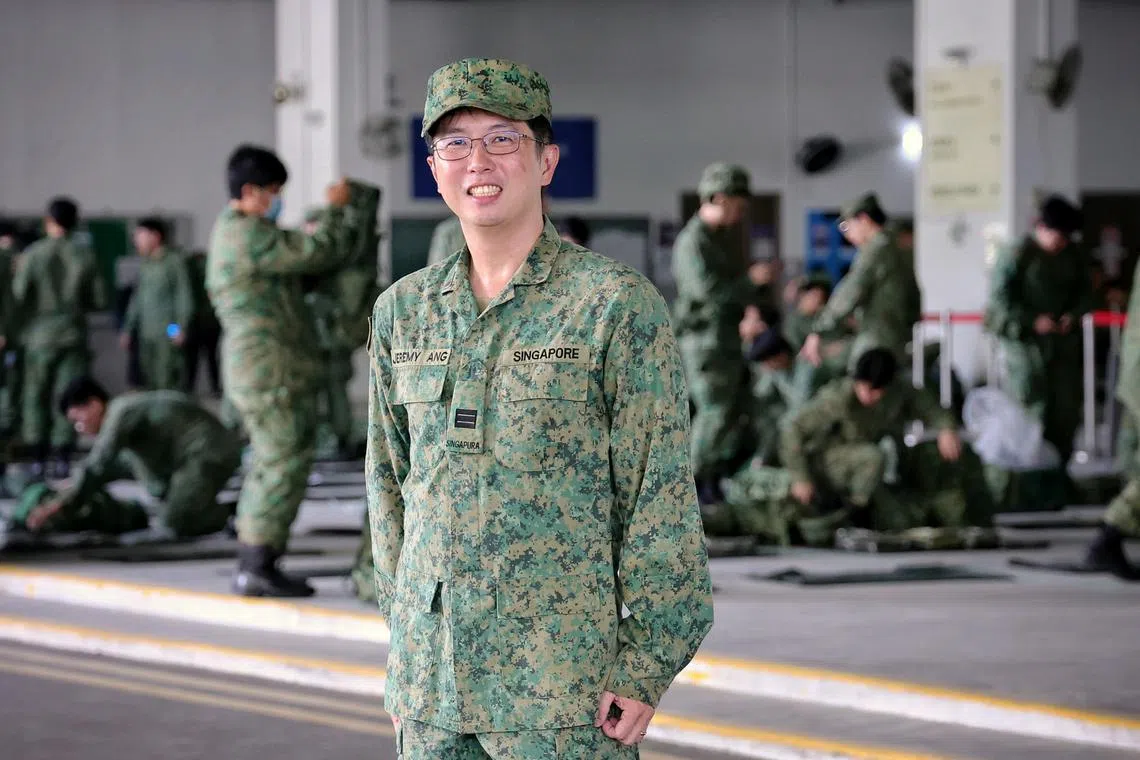Mindef, SAF units among those dealing with attack on S’pore’s critical information infrastructure
Sign up now: Get ST's newsletters delivered to your inbox
Follow topic:
SINGAPORE - Select units from the Ministry of Defence (Mindef) and the Singapore Armed Forces (SAF) are part of a whole-of-government effort to deal with an ongoing cyber attack on Singapore’s critical information infrastructure
Mr Chan, who was visiting Selarang Camp in Loyang to observe a mobilisation exercise involving more than 2,000 reservist soldiers, noted that the cyber attack is an example of the emerging threats that the military has to handle.
While he did not give specifics about which units are involved, the Digital and Intelligence Service established in October 2022 is the SAF service responsible for securing Singapore’s cyber domain.
In particular, the Defence Cyber Command
Separately, Coordinating Minister for National Security K. Shanmugam said on July 19 that the Government decided to name the state-sponsored espionage group behind the ongoing cyber attack because “Singaporeans ought to know where (it) was from”.
Mr Shanmugam, however, would not to be drawn into a discussion about links between the group known as UNC3886 and China
“As far as the Singapore Government is concerned, we can say we are confident that it is this particular organisation. Who they are linked to, and how they operate, is not something I want to go into,” he said on the sidelines of a community event in Chong Pang, where he is MP.
Mr Shanmugam said the number of cyber incidents that is disclosed to the public is far smaller than the actual number of attacks, and the lack of disclosure is because of national security or public interest reasons.
He added: “This time round, our assessment was that we can disclose these details... We have confidence as to who the attacker was. So we thought that that is appropriate to disclose.”
The ongoing attack on Singapore’s critical infrastructure was made public by Mr Shanmugam during the Cyber Security Agency of Singapore’s (CSA) 10th anniversary dinner on July 18.
Describing UNC3886 as highly sophisticated and persistent, Mr Shanmugam said the group is going after high-value, strategic targets that deliver essential services to the country.
“If it succeeds, it can conduct espionage, and it can cause major disruption to Singapore and Singaporeans,” Mr Shanmugam added, noting that the number of suspected attacks here by similarly sophisticated threat actors has increased more than fourfold from 2021 to 2024.
In social media posts on July 19, Minister for Digital Development and Information Josephine Teo made a similar point as to why the Government has decided to disclose the attack by UNC3886.
“Singaporeans should be aware about the ongoing threats we face in cyberspace, and there is never a perfect time to disclose such incidents,” Mrs Teo wrote.
“We always have to strike a fine balance between maintaining operational security and raising public awareness, especially while live operations are ongoing.”
Mrs Teo said the CSA works tirelessly with partner agencies to shore up Singapore’s cyber defences, but it cannot do so alone.
“The support of fellow Singaporeans – in knowing the dangers that confront us, and staying united, vigilant and resolute in the face of threats – will be key to securing a safe and resilient digital future,” she added.
During his visit to Selarang Camp on July 19, Mr Chan was shown how a Smart Mobilisation system built into the OneNS mobile app has helped to speed things up for operationally ready national servicemen (NSmen).
Mr Chan said: “In the past, a typical NSman will require perhaps three to four hours from start to end. Today, I think if they are really fast, they can do it within one to two hours.”
The Smart Mobilisation system was introduced in March 2024 for selected SAF units, and it will be extended to all units by the end of 2025.
“Of course, the SAF is never complacent. We will continuously refine our processes to see how we can make it more seamless,” the minister added.
Mr Chan noted how past mobilisation exercises relied on manual processes, which meant NSmen had to queue up and wait their turn to get their equipment and readiness checked.
With the new system, attendance can be clocked digitally and NSmen can perform their checks in a more decentralised manner.

Servicemen from the 9th Singapore Division having their attendance taken at each station via QR code during a mobilisation exercise at Selarang Camp on July 19.
ST PHOTO: KEVIN LIM
The system also gives commanders, like Captain (NS) Jeremy Ang, 46, real-time information about the status of the mobilisation exercise.
“It’s made things a lot smoother... And for the men on the ground, it is faster in, faster out,” said the school principal, who serves as deputy operations officer in the 23rd Singapore Infantry Brigade.

Captain (NS) Jeremy Ang said the system gives commanders real-time information about the status of the mobilisation exercise.
ST PHOTO: KEVIN LIM
Mr Chan, who was appointed defence minister on May 23, said the most critical component of Singapore’s defence is the fighting spirit of its men, and the SAF is looking at ways to continue to strengthen this spirit and the operational readiness of its troops.
Pointing to new operational challenges on the horizon, Mr Chan said Mindef and the SAF are constantly looking at the lessons that can be learnt, including from conflicts in Europe and the Middle East.
“Even before the threat emerges, we must be able to get our plans ready,” Mr Chan said.
“We don’t necessarily have to show everyone what we have and what we do, but we must be quietly confident that we are able to handle the range of threats,” he added.


